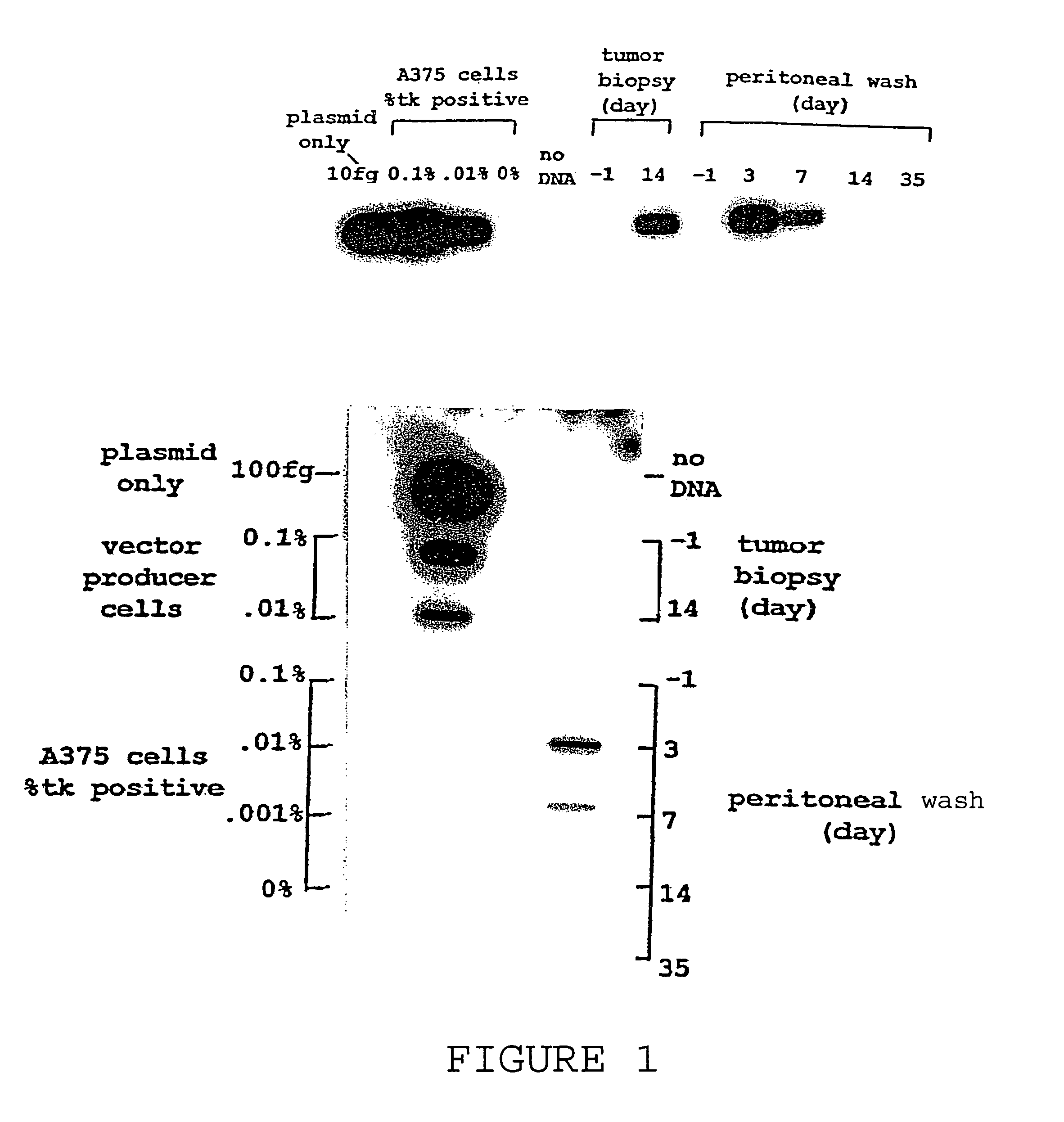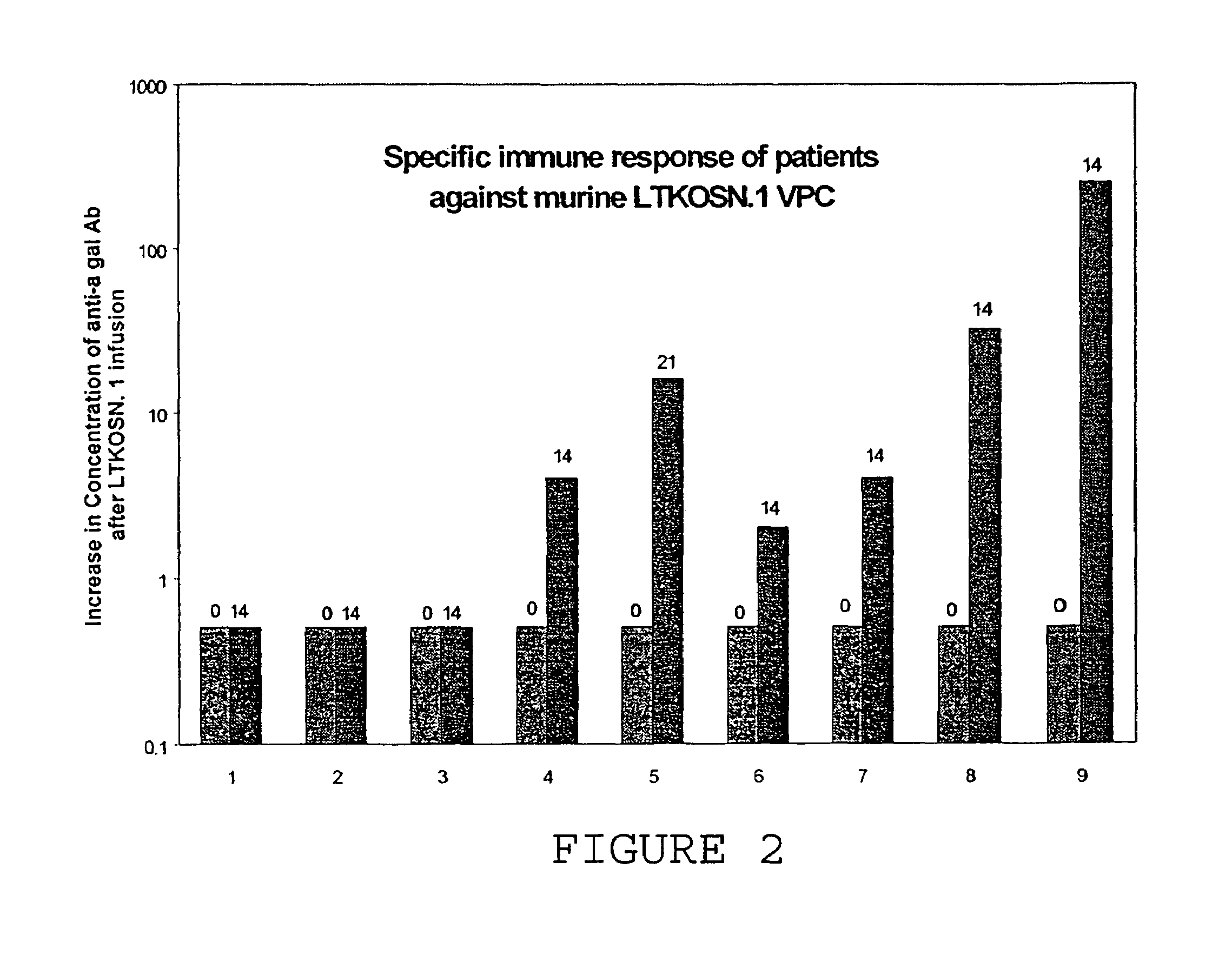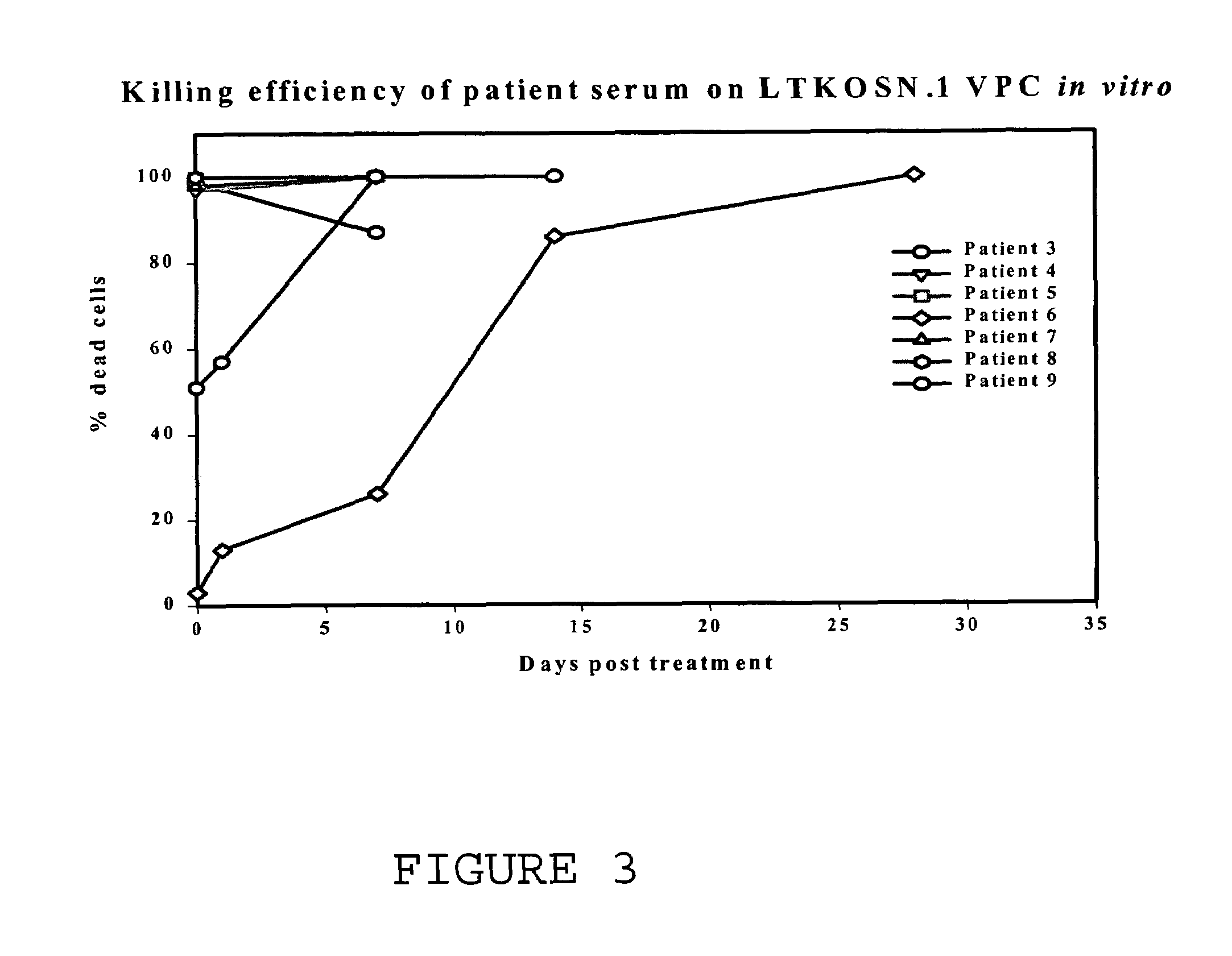Method for tumor treatment using infusion of xenogeneic cells to induce hyperacute rejection and innocent bystander effect
a tumor and xenograft technology, applied in the field of tumor treatment using xenograft to induce hyperacute rejection and innocent bystander effect, can solve the problems of severe hemorrhage that required surgery in 2 patients, mri-visible bleeding in most other patients, and great difficulty for patients, so as to achieve medium-high level vpc killing, high induced serum titer, and altered peritoneal cavity physiology
- Summary
- Abstract
- Description
- Claims
- Application Information
AI Technical Summary
Benefits of technology
Problems solved by technology
Method used
Image
Examples
example 1
Destruction of Murine Cells by Human Serum and Peritoneal Fluid
[0040]The initial interest in hyperacute rejection resulted from studies of destruction of murine vector producer cells (VPC) by peritoneal fluid. VPC have been proposed for in vivo gene delivery as a potential improvement over retroviral particles alone to increase the transduction efficiency in tumor models. Short, M. P., Choi, B. C., Lee, J. K., Malick, A., Breakefield, X. O., and Martuza, R. L., Gene delivery to glioma cells in rat brain by grafting of a retrovirus packaging cell line J. Neurosci. Res. 27, 427–439 (1990). The human serum mediated destruction of murine VPC was immediate. The results indicated that substantial VPC killing occurred after their exposure to peritoneal fluid. It was demonstrated that heparin, enoxaparin, or sCR1 could specifically block lysis of murine cells by human serum. Link, C. J., Levy, J. P., Seregina, T., Atchinson, R. & Moorman, D., Cancer Gene Therapy (eds Mazarakis, H. & Swart, ...
example 2
Phase I Clinical Trial of LTKOSN.1 VPC for Women with Recurrent Ovarian Cancer
[0041]A Phase I clinical trial was completed with 10 patients with recurrent ovarian or fallopian tube cancer. This study was conducted using the xenotransplantation of murine retroviral LTKOSN.1 VPC for in vivo transfer of the HSVtk gene. All patients had failed prior therapy with paclitaxel and either cisplatin or carboplatin. All patients were treated as outpatients. LTKOSN.1 VPC were infused intraperitoneally with doses from 1×106 to 1×108 cell / kg. After 2 weeks, patients were treated for two weeks with ganciclovir (GCV). The data is detailed in Tables 1 and 2.
[0042]
TABLE 1Clinical Outcome in Ovarian Cancer Patients Treated with LTKOSN.1 VPC.DoseSigns andGene transferPatientAge / StageTumorlevelDose (VPC)symptomsobservedResultComments 164 IIICOvarian16 millionabd. pain, nauseaNot testedPartial responseLocal tumor necrosis on histopathology 247 IIICOvarian157 millionabd. pain, nauseaNoMixed responseResolv...
example 3
Safety Results
[0044]Replication competent retrovirus (RCR) S+L− assays were conducted on peripheral blood lymphocytes (PBL) of patients. Cells were co-cultured with Mus dunni cells for two weeks (four passages). After two weeks, supernatants were collected and centrifuged. The supernatant was then placed on PG-4 cells (40 to 60% confluent) for two hours. The supernatant was removed and D10 (DMEM, 10% fetal bovine serum, L-glutamine) added. After four to seven days, PG-4 cells were observed for development of foci. MMLV 4070A was used as the positive control, and Mus dunni cells alone were used as the negative control. No RCR was present in PBL samples obtained up to one year after VPC infusion as detected in co-cultivation with Mus dunni followed by S+L− assay.
PUM
| Property | Measurement | Unit |
|---|---|---|
| total volume | aaaaa | aaaaa |
| of time | aaaaa | aaaaa |
| MRI | aaaaa | aaaaa |
Abstract
Description
Claims
Application Information
 Login to View More
Login to View More - R&D
- Intellectual Property
- Life Sciences
- Materials
- Tech Scout
- Unparalleled Data Quality
- Higher Quality Content
- 60% Fewer Hallucinations
Browse by: Latest US Patents, China's latest patents, Technical Efficacy Thesaurus, Application Domain, Technology Topic, Popular Technical Reports.
© 2025 PatSnap. All rights reserved.Legal|Privacy policy|Modern Slavery Act Transparency Statement|Sitemap|About US| Contact US: help@patsnap.com



